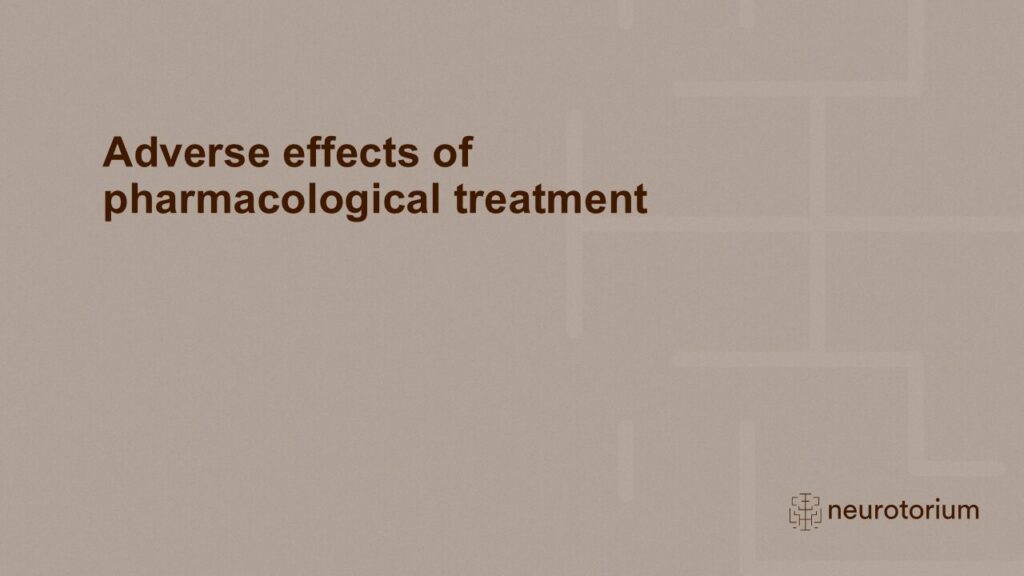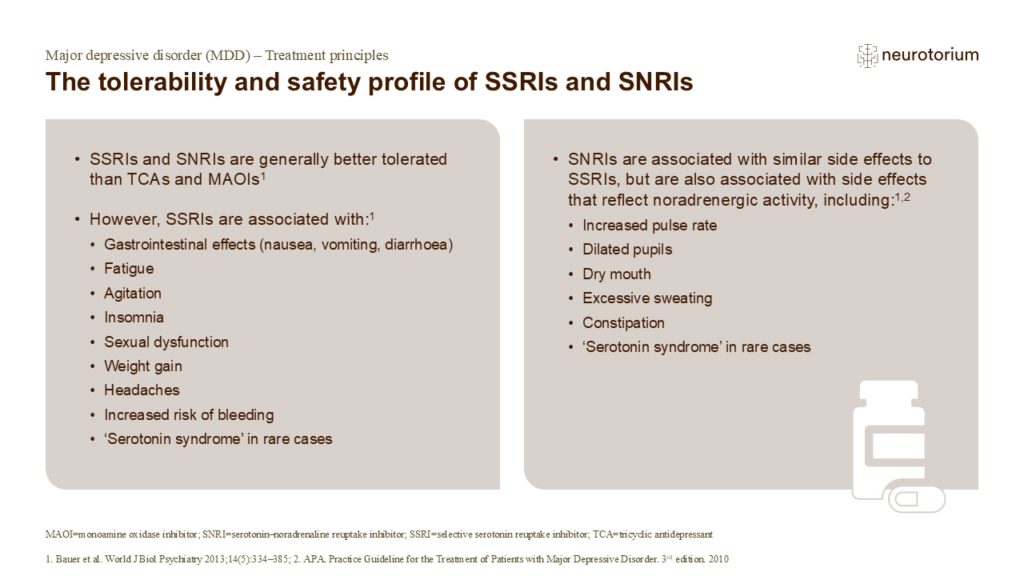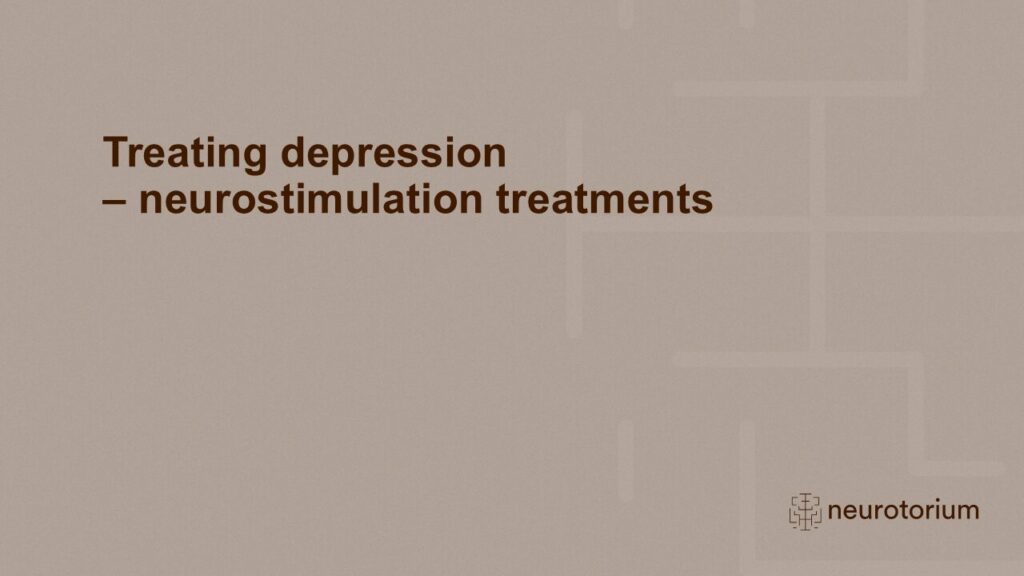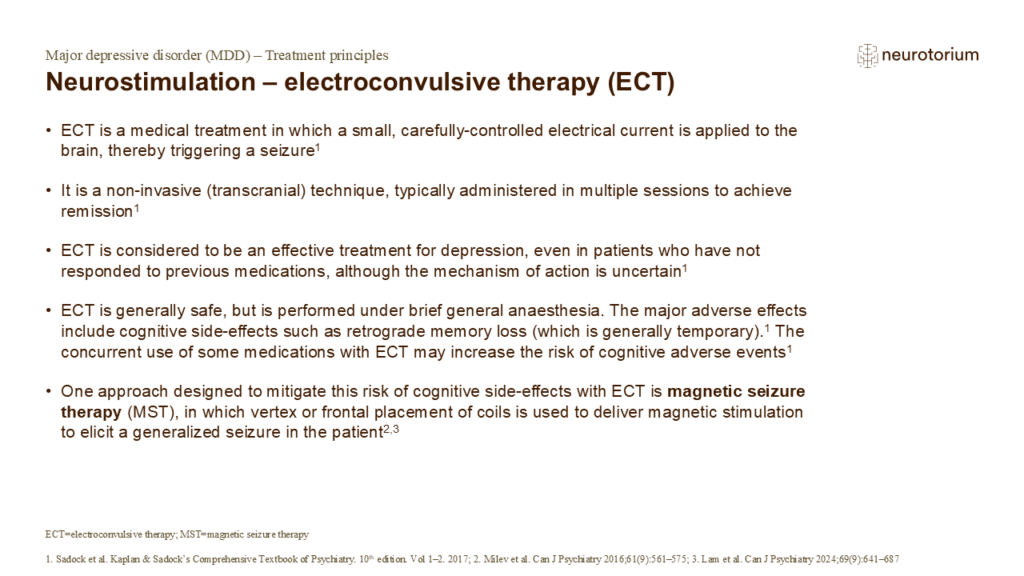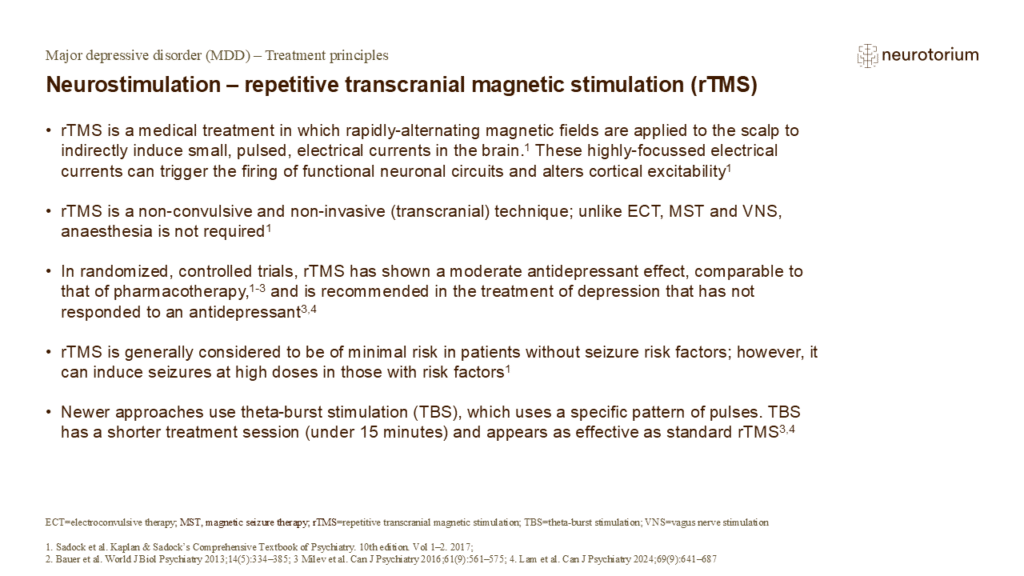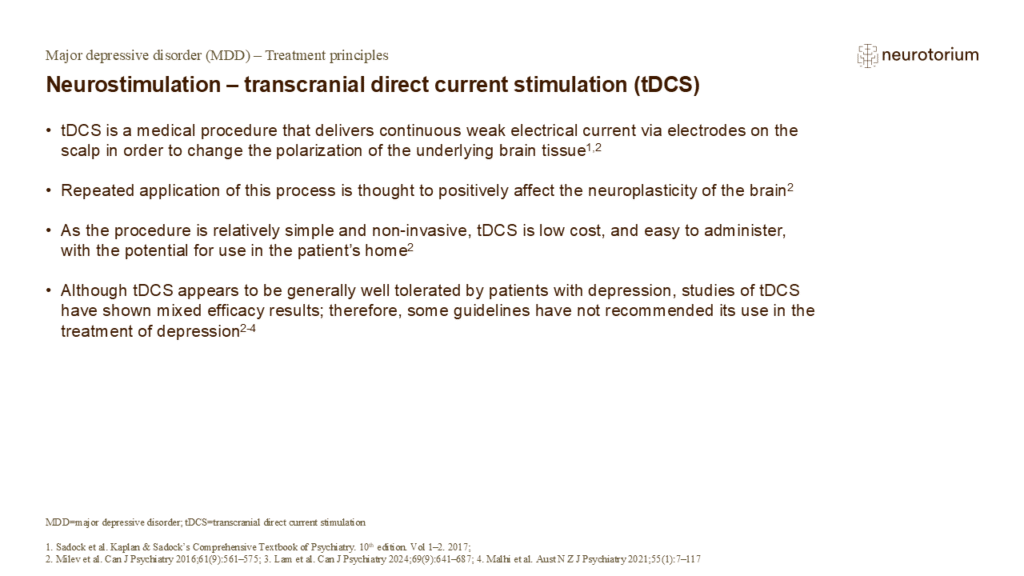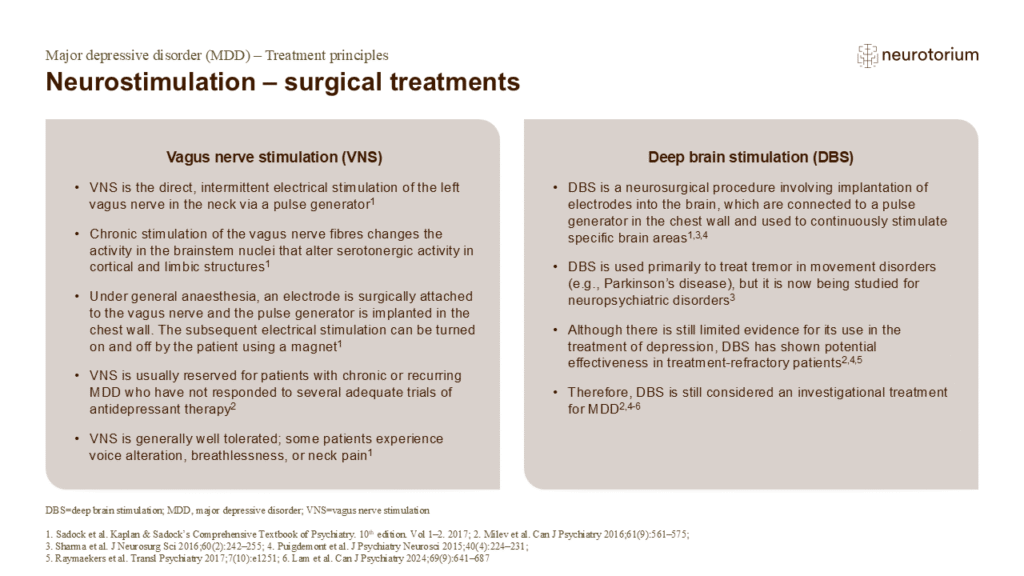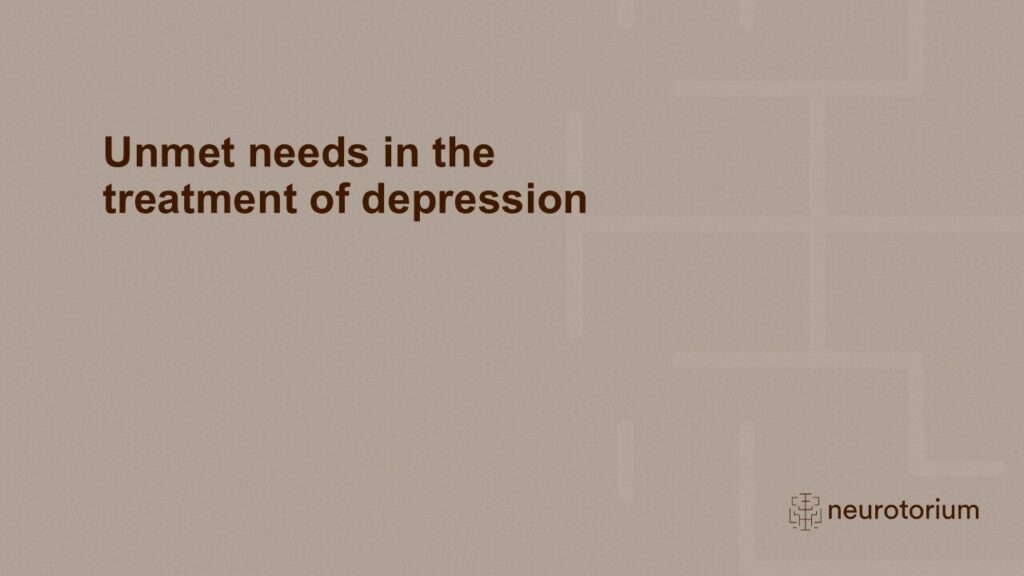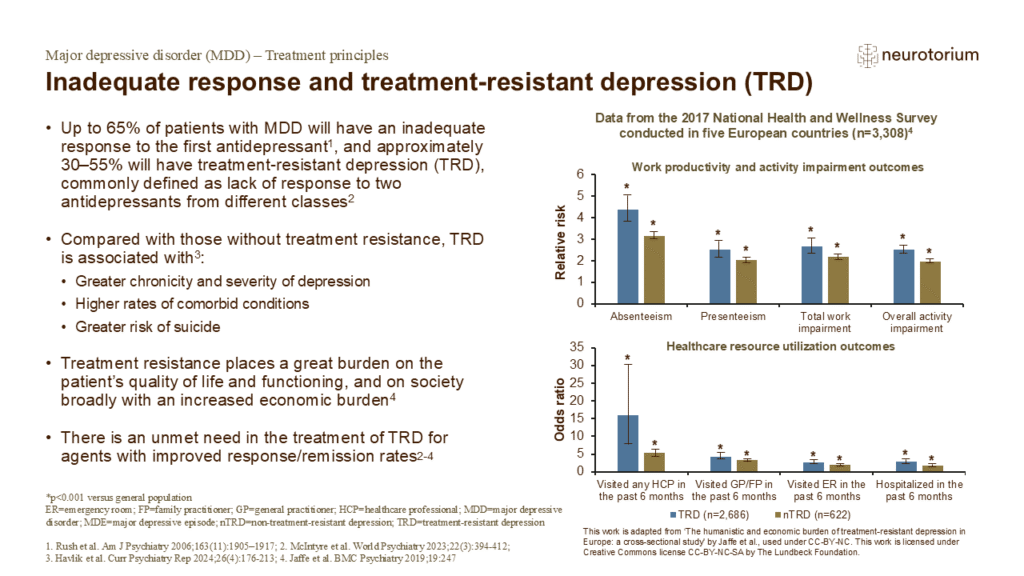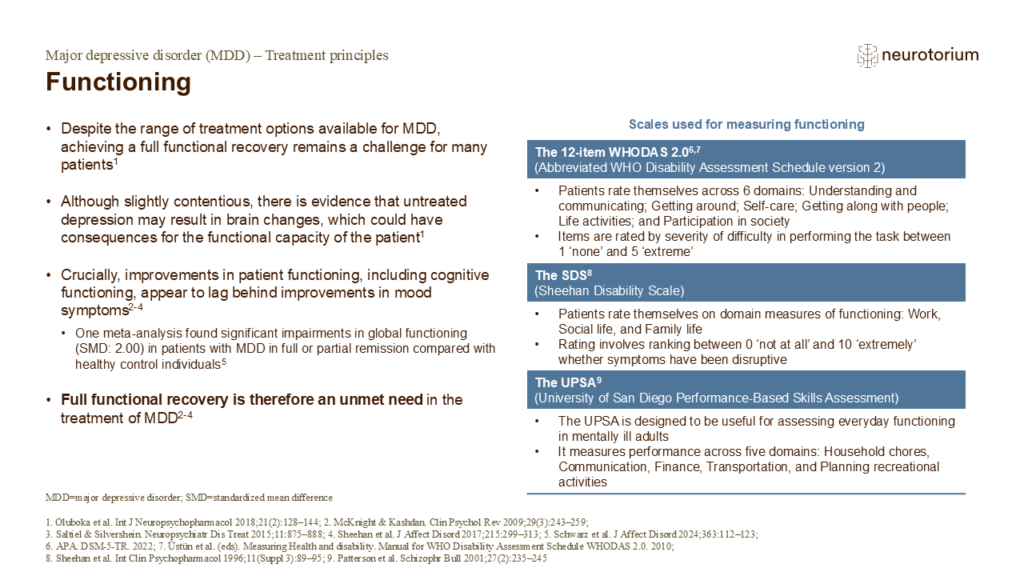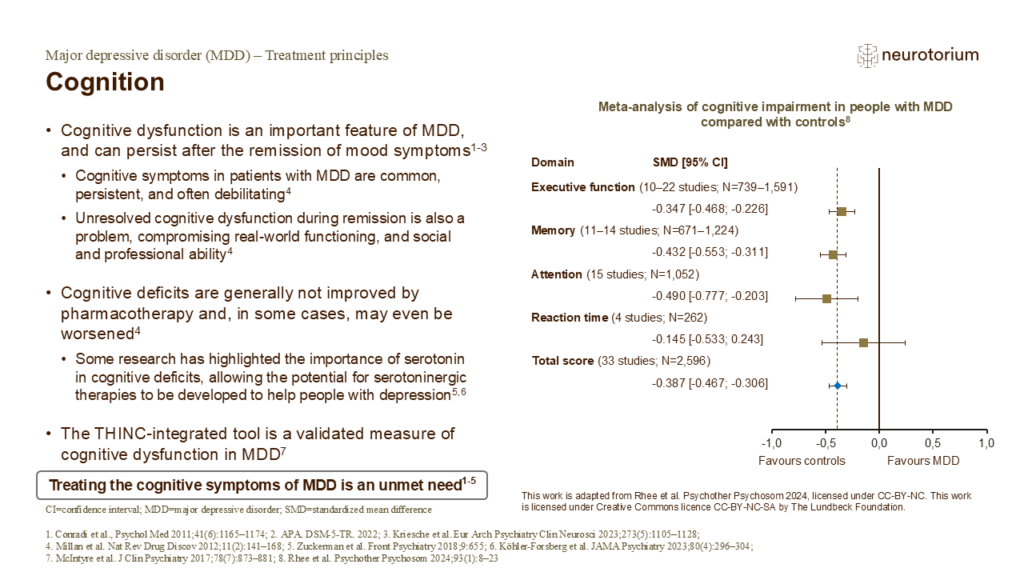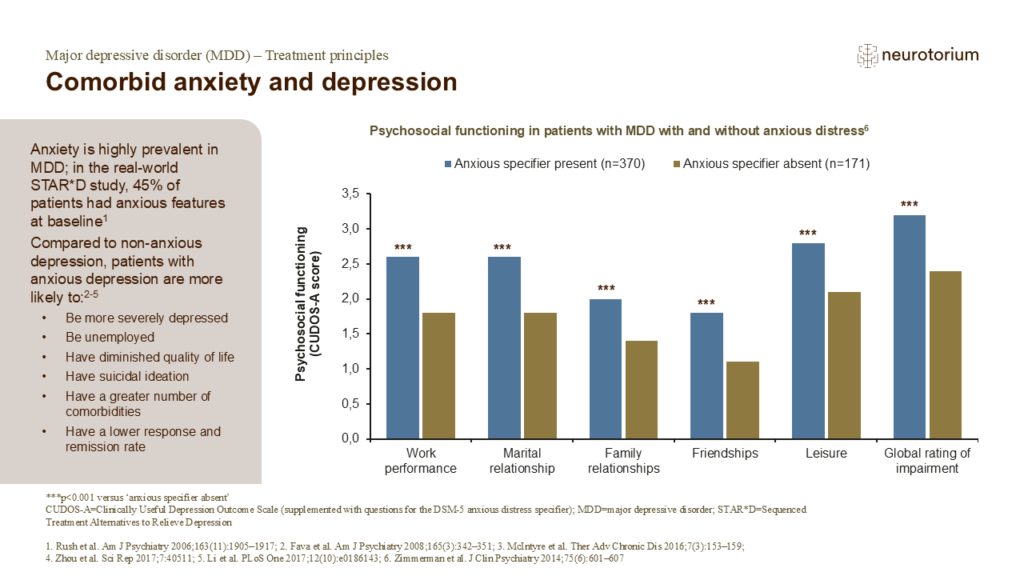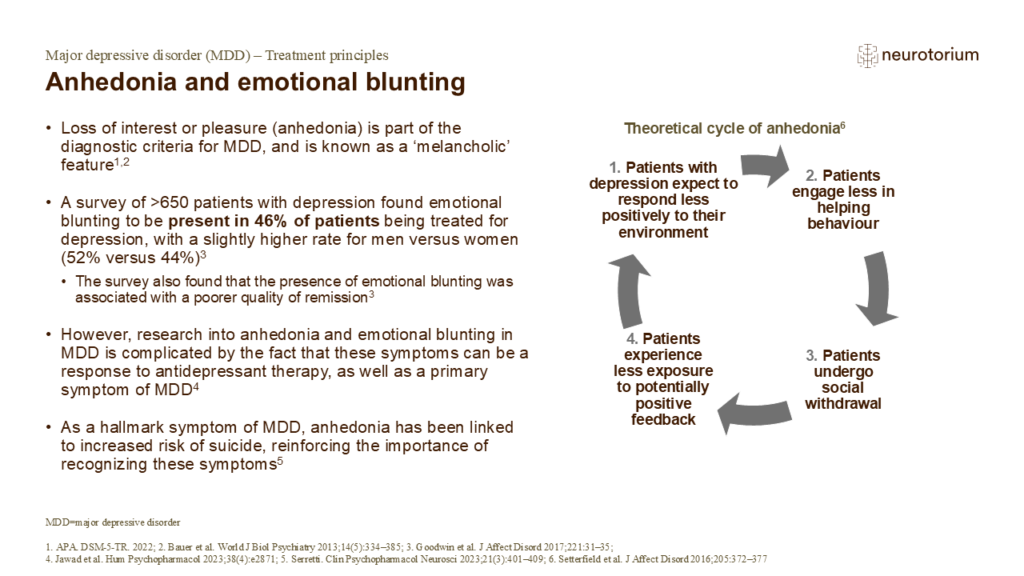Index for
slide deck
Introduction

Major depressive disorder (MDD) - Treatment principles

The course of MDD
The optimal outcome for a patient with major depressive disorder (MDD) is a full recovery from the major depressive episode and to never become depressed again.5 Treatment of MDD is divided into three phases, corresponding to different stages of the illness.6 Each of thes…

Principles for management of MDD
The general objectives of MDD treatment are to improve depressive symptom severity and functioning while considering patient safety; specific goals of treatment should be individualized using a patient-centred approach.1 Healthcare professionals working with people with M…

Treatment guidelines
There is no universal treatment guideline for MDD – various evidence-based treatment guidelines have been developed to aid clinicians.1 As shown on the slide, guidelines that have been developed are usually stratified according to the severity of depression – mild, modera…

The global approach to treatment of depression
The slide summarizes the global approach to the treatment of MDD, and indicates deviations from this global approach where relevant.
References:
Treating depression - psychological treatments
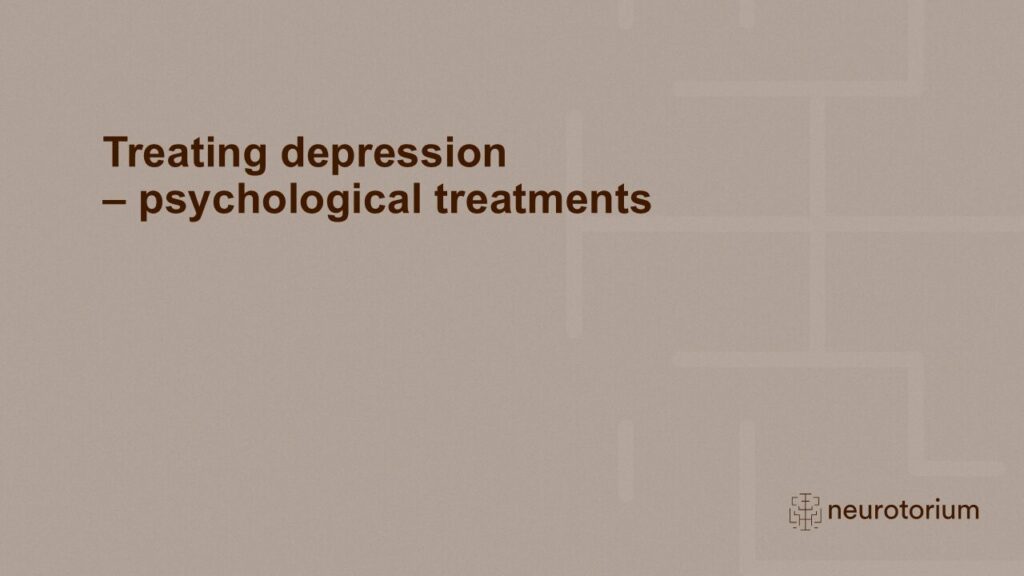
Treating depression - psychological treatments

Psychological treatments for depression
There are many non-pharmacological approaches to the treatment of depression.1,2
References:

Psychological treatments – efficacy and formats
There are many non-pharmacological approaches to the treatment of depression, which can be used together with antidepressants.2,5,8 Although the empirical data behind the different psychological treatments varies between treatments, many continue to improve the evidence b…

Psychological treatments – other psychotherapies
Many other psychological treatments for depression have been developed, some of which are briefly introduced on the slide.1,2
References:
Treating depression – pharmacological treatments
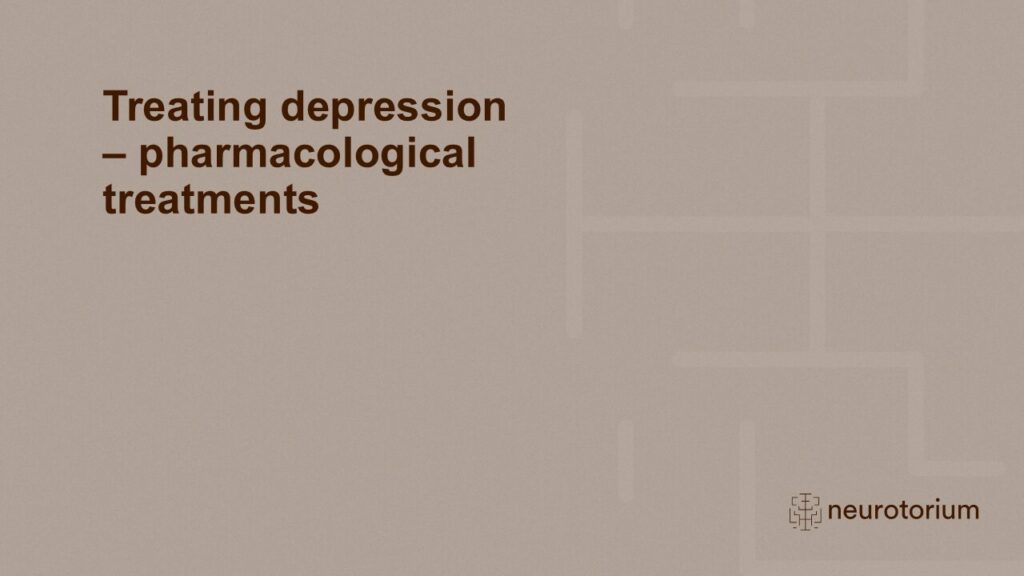
Treating depression – pharmacological treatments
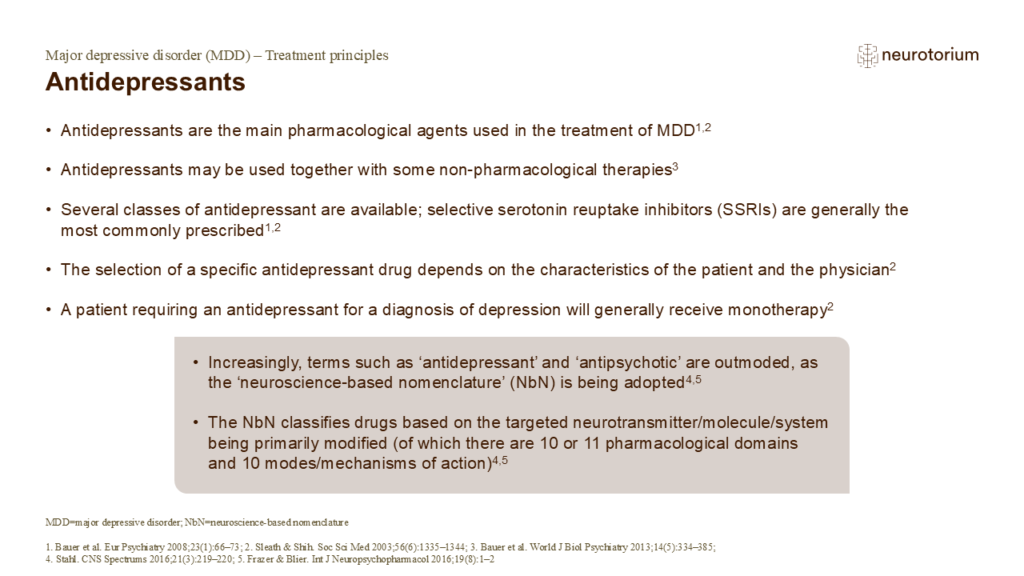
Antidepressants
The Factors Influencing Depression Endpoints Research (FINDER) study was a pan-European study, of >3,000 adults about to start antidepressant medication either for their first episode of depression or for a new episode of recurrent depression.1 The study was conducted to …

Basic mechanisms of antidepressant action
In general, antidepressants function by increasing the availability of monoamines (serotonin, noradrenaline, and/or dopamine) in the synapse; these monoamines are thought to be depleted in depression.1
- SSRIs, SNRIs and TCAs achieve this by blocking one or more of the mon…

Other mechanisms of antidepressant action
Changes in glutamate physiology have been detected in patients with MDD relative to control individuals.2 However, because glutamate is found throughout the body, it can be hard to pinpoint the exact source of glutamate in peripheral tissues.2 Methods have moved on to usi…
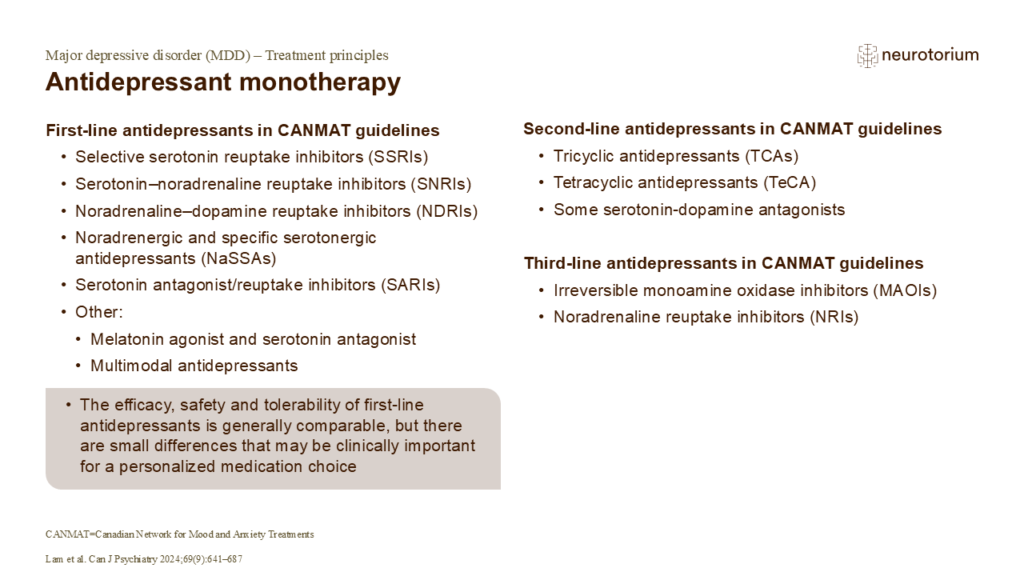
Antidepressant monotherapy
The prospective STAR*D study examined the effectiveness of antidepressants in a naturalistic population of outpatients with MDD seeking medical care:2
- All participants (n=3,671) received an SSRI as their first-line treatment, and one third of these patients achieved remi…

Pharmacotherapy for inadequate response
Second-line options include switching to another antidepressant, augmenting the initial antidepressant with a non-antidepressant drug, or combining it with another antidepressant.1 In clinical practice, although there is no evidence to support it, switching is generally u…

Strategies for patients with inadequate response
This slide compares the guideline recommendations for patients with inadequate response to antidepressant monotherapy from four internationally-recognised bodies:
1.American Psychiatric Association (APA)1
2.National Institute for Health and Care Excellence (NICE)2
3.Briti…

Summary of pharmacotherapy recommendations
A summary of the guidelines for the treatment of MDD are shown on the slide. As already discussed, guidelines generally recommend treatment with an SSRI, close supervision, followed by maintenance therapy.1-6
References:


